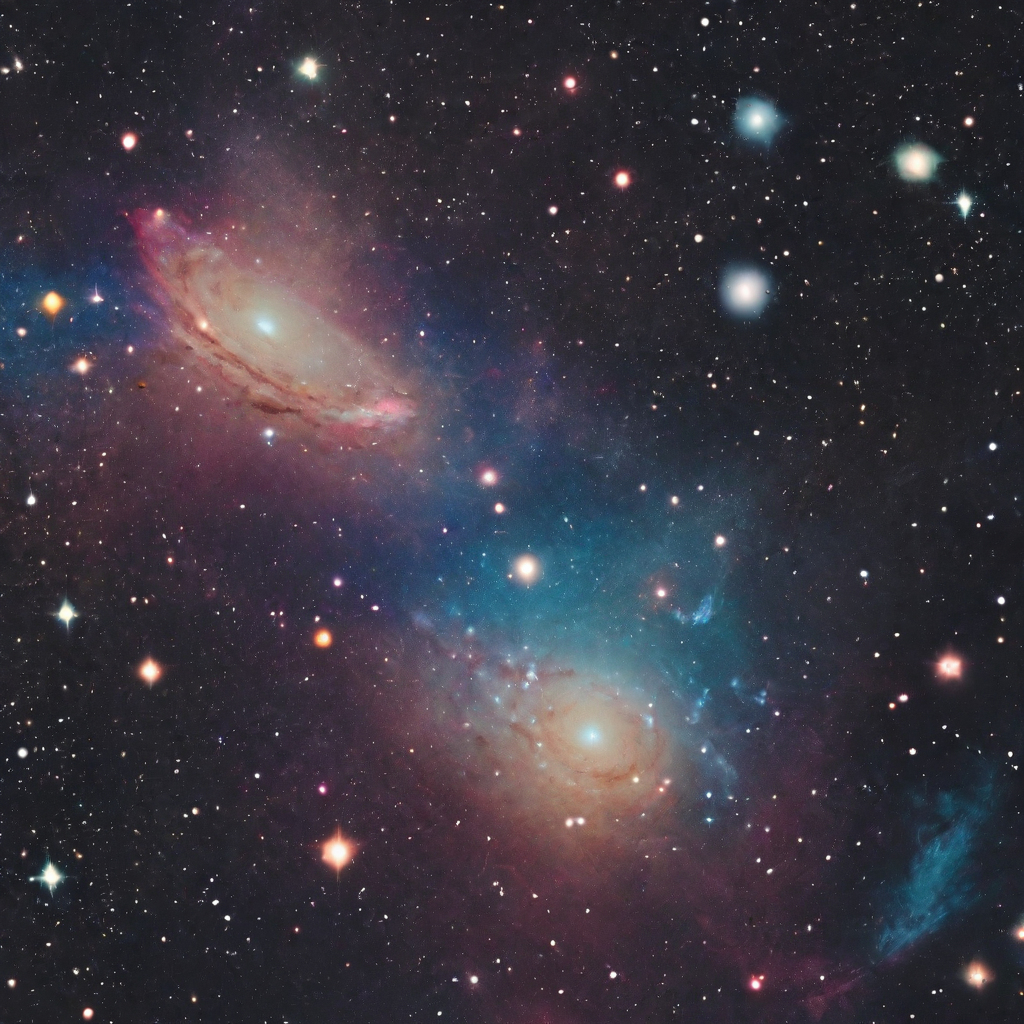Galaxies
Galaxies are immense systems of stars, gas, dust, and dark matter that exist in the vastness of space. They are the building blocks of the universe and come in various shapes, sizes, and configurations. Galaxies are truly awe-inspiring cosmic entities that have captured the imagination of humans for centuries.
A galaxy is a gravitationally bound system, typically consisting of hundreds of millions to trillions of stars. These stars are held together by their mutual gravitational attraction and orbit around a common center of mass. The stars in a galaxy are not randomly distributed but organized into structures such as spiral arms, elliptical shapes, or irregular formations.
There are three main types of galaxies: spiral galaxies, elliptical galaxies, and irregular galaxies. Spiral galaxies, such as our own Milky Way, are characterized by a central bulge surrounded by spiral arms that extend outward. Elliptical galaxies, on the other hand, have a more rounded or elliptical shape and do not possess the distinct spiral structure. Irregular galaxies lack a defined shape and often exhibit chaotic and irregular features.
Galaxies are not isolated entities but are part of larger structures known as galaxy clusters or galaxy groups. These structures consist of multiple galaxies held together by their collective gravitational pull. Galaxy clusters can contain hundreds or even thousands of galaxies, and their study provides valuable insights into the formation and evolution of galaxies.
The study of galaxies, known as galactic astronomy, has greatly expanded our understanding of the universe. Scientists use powerful telescopes and sophisticated instruments to observe and analyze the properties, composition, and movements of galaxies. Through these observations, astronomers have discovered that galaxies are not static but are constantly evolving and interacting with each other.
Galaxies play a pivotal role in the cosmic web of the universe. They are the birthplaces of stars, where the raw materials necessary for stellar formation are found. Galaxies also contribute to the enrichment of the universe through the production and distribution of heavy elements.
Furthermore, galaxies are essential for our understanding of cosmology and the origins of the universe. The study of distant galaxies allows scientists to probe the early stages of the universe and investigate the processes that led to the formation of galaxies and the large-scale structure we observe today.
In conclusion, galaxies are vast systems of stars, gas, dust, and dark matter that exist in the universe. They come in different shapes and sizes and play a crucial role in shaping the cosmic landscape. The study of galaxies provides valuable insights into the nature of the universe, its evolution, and our place within it.










